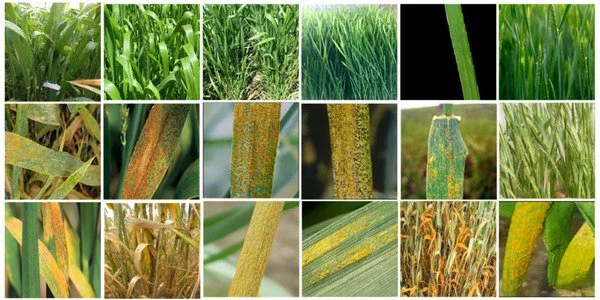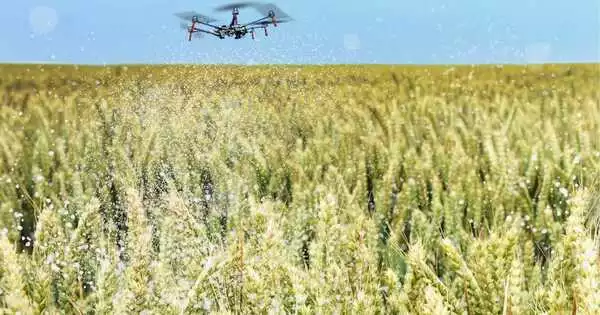AI-powered object recognition technology could potentially help solve wheat disease by improving the early detection and diagnosis of plant diseases. Wheat diseases can cause significant losses in crop yield and quality, affecting food security and economic stability. Traditional methods of disease detection and diagnosis rely on visual observation by human experts, which can be time-consuming and subjective.
A new University of Illinois project is using advanced object recognition technology to keep toxin-contaminated wheat kernels out of the food supply and to assist researchers in making wheat more resistant to the crop’s main nemesis, fusarium head blight, or scab disease.
“Fusarium head blight causes significant economic losses in wheat, and the toxin associated with it, deoxynivalenol (DON), can be harmful to human and animal health. People growing wheat in the Eastern United States have been put off by the disease because they can grow a perfectly good crop and then take it to the elevator only to have it docked or rejected. People have suffered as a result of this. As a result, it is critical to try to increase resistance and reduce DON risk as much as possible” Jessica Rutkoski is an assistant professor in the Department of Crop Sciences at the University of Illinois’ College of Agricultural, Consumer, and Environmental Sciences (ACES). Rutkoski is a co-author on the new Plant Phenome Journal paper.
To increase resistance to any crop disease, grow a large number of genotypes of the crop, infect them with the disease, and look for symptoms. The process, known as phenotyping in plant breeding, is successful when it identifies resistant genotypes that do not develop symptoms or have milder symptoms. When this occurs, researchers attempt to identify the genes associated with disease resistance and then incorporate those genes into high-performing crop hybrids.
Fusarium head blight causes significant economic losses in wheat, and the toxin associated with it, deoxynivalenol (DON), can be harmful to human and animal health. People growing wheat in the Eastern United States have been put off by the disease because they can grow a perfectly good crop and then take it to the elevator only to have it docked or rejected.
Jessica Rutkoski
It’s a time-consuming, repetitive process, but Rutkoski hoped that one step, phenotyping for disease symptoms, could be sped up. Junzhe Wu, a doctoral student in the Department of Agricultural and Biological Engineering (ABE), and Girish Chowdhary, an associate professor in ABE and the Department of Computer Science, were consulted (CS). ABE is a department within ACES and the Grainger College of Engineering, which also houses CS.
“We wanted to see if we could quantify kernel damage by taking pictures of grains with our phones. Normally, we look at a petri dish of kernels and assign a subjective rating to it. It’s extremely mind-numbing work. People must be specially trained, and the process is slow, difficult, and subjective. Because the symptoms are fairly obvious, a system that could automatically score kernels for damage appeared feasible” According to Rutkoski.
Wu and Chowdhary both agreed that it was feasible. They began with object detection and classification algorithms similar to those used by tech giants. To distinguish between diseased and healthy wheat kernels from cell phone images, Wu and Chowdhary had to push the technology even further.

“One of the novel aspects of this breakthrough is that we trained our network to detect minutely damaged kernels with high enough accuracy using only a few images. We accomplished this through meticulous data pre-processing, transfer learning, and bootstrapping of labeling activities” Chowdhary explains. “This is yet another significant victory for machine learning and AI in agriculture and society.”
“This project builds on the AIFARMS National AI Institute and the Center for Digital Agriculture here at Illinois to leverage the power of AI for agriculture,” he adds.
When the technology successfully detected fusarium damage – small, shriveled, gray, or chalky kernels – it could also predict the grain’s toxin load; the more external signs of damage, the higher the DON content.
When the researchers tested the machine learning technology on its own, it predicted DON levels better than in-field ratings of disease symptoms, which breeders frequently use instead of kernel phenotyping to save time and resources. However, when compared to humans in the lab rating disease damage on kernels, the technology was only 60% as accurate.
The researchers are still encouraged, though, as their initial tests didn’t use a large number of samples to train the model. They’re currently adding samples and expect to achieve greater accuracy with additional tweaking.
“While additional training is required to improve our model’s capabilities, preliminary testing shows promising results and demonstrates the possibility of providing an automated and objective phenotyping method for fusarium damaged kernels that could be widely deployed to support resistance breeding efforts,” Wu says.
The ultimate goal, according to Rutkoski, is to create an online portal where breeders like her can upload cell phone photos of wheat kernels for automatic fusarium damage scoring.





